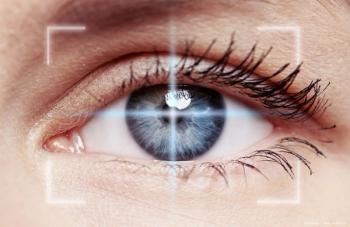
- Ophthalmology Times: September/October 2025
- Volume 50
- Issue 5
Advancements in femtosecond laser technology benefit surgeons and patients
Key Takeaways
- The VisuMax 800 laser system offers faster cutting speeds and improved docking, enhancing surgical efficiency and patient comfort.
- SMILE and LASIK procedures yield similar outcomes, but SMILE is preferred for its minimally invasive nature and reduced postoperative risks.
Faster cutting speeds and ergonomic design streamline workflows and enhance comfort.
The field of refractive surgery has undergone multiple technological developments aimed at enhancing patient outcomes, optimizing workflows, and improving patient satisfaction. The VisuMax laser platform (Zeiss) is among the commercially available femtosecond laser systems and is used in a range of refractive procedures. In our practice at Nethradhama Super Speciality Eye Hospital, the platform is applied for small incision lenticule extraction (SMILE) and LASIK procedures, depending on the patient’s refractive profile.
SMILE and LASIK procedures yield similar outcomes for patients with myopia and astigmatism.1-3 In our practice, SMILE is performed more frequently for these patients because it does not require a corneal flap and involves only a minimally invasive incision to create the lenticule, which reduces exposure to risks such as postoperative dry eye syndrome or flap dislocation.4,5 The minimally invasive nature of SMILE leads to a smoother recovery process, benefiting both the surgeon and the patient.
Second-generation femtosecond laser system
The second-generation VisuMax 800 (VM800) laser system has an increased pulse frequency of 2 MHz compared with the first-generation VM500 at 500 kHz. This higher frequency results in faster cutting speeds and shorter suction times. In our experience, the docking process with the second-generation system differed from that of the first-generation system and was observed to be improved.
Centration has historically been a challenge with the first-generation system, where patients are instructed to fixate on a green light and remain still until suction is activated. This manual approach can be time-consuming. The addition of the CentraLign software provides automated support for centration and allows for a smoother docking experience.
Study data indicate that approximately 11% of patients who undergo SMILE experience astigmatic undercorrection,6 which may be attributed to the absence of cyclotorsion control or eye-tracking technology with the original platform. The second-generation system incorporates OcuLign pattern rotation to address cyclotorsion. Integrating the OPMI surgical microscope during manual surgical manipulation of the cornea instilled confidence during the procedure.
Prospective single-site study
In this prospective, single-site study,7 30 patients underwent the SMILE procedure, with 1 eye treated using the first-generation system and the contralateral eye treated using the second-generation system. In addition to standard visual and refractive clinical outcomes, the study evaluated patient satisfaction and clinical workflows. This study represents the first investigation comparing outcomes between the first- and second-generation VM systems.
Optimized surgical workflow
Our study measured docking and suction times, laser time, lenticule dissection, total surgical time, and ease of dissection. The timings were noted during the eye procedures in both groups (Table 1).7 The mean docking time and surgical time were significantly lower in the VM800 group (46.53 ± 11 seconds and 4.52 ± 2.33 minutes, respectively) than in the VM500 group (68.25 ± 15 seconds and 6.22 ± 2.04 minutes, respectively) (P < .001). No differences were found between groups for lenticule dissection time. In addition to using an optimal laser, I have found that a successful lenticule dissection largely depends on the optimization of laser settings in combination with the surgeon’s technique.
No cases of intraoperative suction loss were experienced in either of our study groups. It took more time during surgical preparation to raise the patient bed toward the patient than to lower the laser arm to applanate the cornea. With the next-generation laser, we were able to reduce the overall time in the operating room due to shorter docking, suction, and laser times. The patients exhibited minimal anxiety or claustrophobia with the new laser system.
Improved patient satisfaction
Reduced surgery time is only 1 aspect of the laser’s contribution to patient satisfaction. The next-generation technology is designed with patient comfort and safety in mind, addressing specific concerns associated with refractive surgeries. An intraoperative experience questionnaire was developed with a scale of 0 to 100, with 0 being “unpleasant” and 100 being “extremely enjoyable.”
Table 2 shows the results from the subjective patient questionnaire.7 Patients rated the overall intraoperative experience significantly better in the VM800 group. Patients preferred the eye that had treatment with the second-generation platform 80% of the time and had no preference 20% of the time. No patient reported a strong preference for the eye treated with the first-generation system. Although the VM800 was preferred, we found the VM500 still provided a more comfortable experience for patients than other currently available lasers.
In this study, patients reported a more relaxed experience with the VM800 than the VM500. The ergonomic design provides comfort for surgeons and patients, eases anxiety and claustrophobic tendencies in patients, and optimizes surgeon-patient interaction.
Visual and refractive outcomes
Our results (Figure7) were consistent with those of previous studies,8,9 with 97% of eyes achieving 20/20 or better uncorrected distance visual acuity (UDVA) using the VM800, and no eyes losing any lines of corrected distance visual acuity (CDVA). With both systems using equivalent optics and laser delivery designs, similar visual and refractive outcomes were anticipated for SMILE procedures performed with either system. This was confirmed when mean postoperative UDVA, CDVA, spherical equivalent, cylinder, objective scatter index, higher-order aberrations, and contrast sensitivity were evaluated, showing comparable results between the 2 groups.
Learning curve
When transitioning from the first- to the second-generation system, the user experience remained largely consistent, with minor adjustments related to the new “open” design, screen-based docking, joystick placement, and changes in the docking method. Specifically, with the VM500, the patient bed must be elevated to position the patient’s eye for corneal applanation, whereas the VM800 requires the clinician to lower the laser arm. In our study, moving the patient bed took longer than lowering the laser arm, indicating a difference in workflow efficiency between the 2 systems. Refractive surgeons can now perform more surgeries, benefiting from the ergonomic design that caters to the clinician and the patient.
Conclusion
As refractive technologies evolve, new tools will become available with even shorter surgical times and enhanced patient experiences. This next-generation laser is ideal for patients who may be prone to anxiety or claustrophobia, thanks to its reduced docking, suction, and laser times.
The combination of faster cut speeds and improved docking experience increased efficiencies while ensuring patient comfort and surgeon ease with the ergonomic updates. Our improved clinical workflow experience aligns with findings from another recent study.10
Supriya Sriganesh, MBBS, MS, DNB, FPRS (RGUHS)
E: [email protected]
Sriganesh is with the Nethradhama Super Speciality Eye Hospital in Bangalore, India. She is a consultant to Carl Zeiss Meditec.
References
Moshirfar M, McCaughey MV, Reinstein DZ,Shah R, Santiago-Caban L, Fenzl CR. Small-incision lenticule extraction. J Cataract Refract Surg. 2015;41(3):652-665. doi:10.1016/j.jcrs.2015.02.006
Kamiya K, Takahashi M, Nakamura T, Kojima T, Toda I, Kariya M. A multicenter study on early outcomes of small-incision lenticule extraction for myopia. Sci Rep. 2019;9(1):4067. doi:10.1038/s41598-019-40805-1
Ang M, Ho H, Fenwick E, et al. Vision-related quality of life and visual outcomes after small-incision lenticule extraction and laser in situ keratomileusis. J Cataract Refract Surg. 2015;41(10):2136-2144. doi:10.1016/j.jcrs.2015.10.049
Wong AHY, Cheung RKY, Kua WN, Shih KC, Chan TCY, Wan KH. Dry eyes after SMILE. Asia Pac J Ophthalmol (Phila). 2019;8(5):397-405. doi:10.1097/01.APO.0000580136.80338.d0
Kobashi H, Kamiya K, Shimizu K. Dry eye after small incision lenticule extraction and femtosecond laser-assisted LASIK: meta-analysis. Cornea. 2017;36(1):85-91. doi:10.1097/ICO.0000000000000999
Pedersen IB, Ivarsen A, Hjortdal J. Changes in astigmatism, densitometry, and aberrations after SMILE for low to high myopic astigmatism: a 12-month prospective study. J Refract Surg. 2017;33(1):11-17. doi:10.3928/1081597X-20161006-04
Ganesh S, Brar S, Swamy DT. Comparison of clinical outcomes and patient satisfaction following SMILE performed with the VisuMax 800 in one eye and VisuMax 500 in the contralateral eye. J Refract Surg. 2025;41(1):e14-e21. doi:10.3928/1081597X-20241113-02
Reinstein DZ, Archer TJ, Potter JG, Gupta R, Wiltfang R. Refractive and visual outcomes of SMILE for compound myopic astigmatism with the VISUMAX 800. J Refract Surg. 2023;39(5):294-301. doi:10.3928/1081597X-20230301-02
Saad A, Klabe K, Kirca M, Kretz FAT, Auffarth G, Breyer DRH. Refractive outcomes of small lenticule extraction (SMILE) Pro with a 2 MHz femtosecond laser. Int Ophthalmol. 2024;44(1):52. doi:10.1007/s10792-024-02915-2
Brar S, Ganesh S, Bhargav S. Comparison of intraoperative time taken for docking, lenticule dissection, and overall workflow for SMILE performed with the VisuMax 800 versus the VisuMax 500 femtosecond laser. J Refract Surg. 2023;39(9):648. doi:10.3928/1081597X-20230726-03
Articles in this issue
about 1 month ago
Transformative advances in vision research: It’s the scienceabout 1 month ago
Anti-VEGF innovations in retinal disease: From molecules to medicineabout 1 month ago
From numbers to meaning: Graphical reporting in refractive surgeryabout 1 month ago
Evolving glaucoma therapy: A new era of interventional strategiesabout 1 month ago
Proactive strategies and sustained delivery advance glaucoma careabout 2 months ago
Periorbital rejuvenation: Past, present, and nextabout 2 months ago
The mechanics of presbyopia: From muscle movement to functional visionabout 2 months ago
Rethinking punctal occlusion as an option for allergic conjunctivitisNewsletter
Don’t miss out—get Ophthalmology Times updates on the latest clinical advancements and expert interviews, straight to your inbox.
















































.png)


